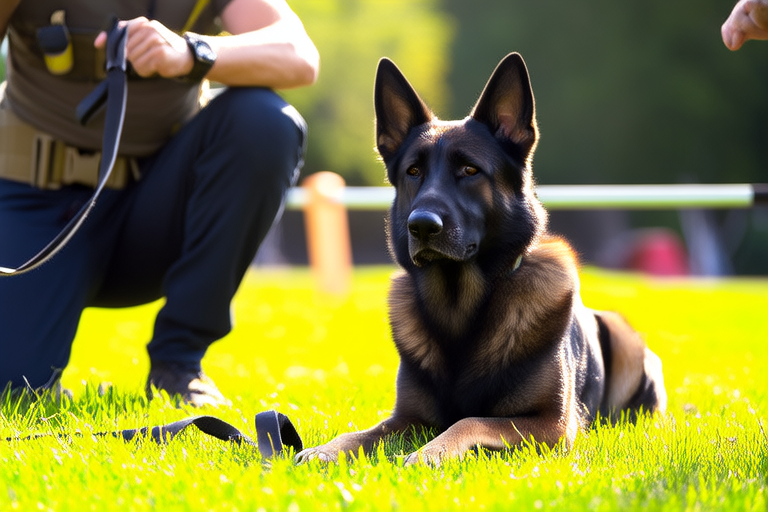
From Herding Fields to Family Heavens: The Journey of German Shepherds
In the vast tapestry of canine history, few breeds have woven themselves as intricately into the fabric of human life as the German Shepherd. Originating from the herding fields of Germany, these dogs were initially bred for their exceptional herding abilities and robust physical attributes. Their journey from the rugged landscapes of their ancestors to the cozy corners of modern homes is a testament to their adaptability, intelligence, and unwavering loyalty.
The Origins in Herding Fields
The roots of the German Shepherd can be traced back to the late 19th century in rural Germany. Farmers and shepherds needed a dog that could efficiently herd sheep and cattle across varied terrains. These dogs were selected for their keen sense of smell, sharp instincts, and tireless energy. They thrived in the open fields, where their agility and strength allowed them to navigate through dense flocks without causing harm. The breed’s early environment honed their natural protective instincts and problem-solving skills, laying the foundation for their future versatility.
German Shepherds were adept at understanding complex commands and interpreting subtle cues from their handlers. This innate ability to work harmoniously with humans was crucial in their herding duties, making them indispensable assets on farms and in villages. Their initial roles were demanding, requiring them to be both physically fit and mentally astute. Over time, their reputation for reliability and intelligence spread, drawing the attention of enthusiasts and breeders alike.
The Evolution: A Pivotal Role for Max von Stephanitz
The transformation of the German Shepherd into a distinct breed is largely attributed to Max von Stephanitz, a German cavalry officer and dog breeder. In 1899, von Stephanitz attended a dog show where he encountered a dog named Hektor Linksrhein, later renamed Horand von Grafrath. Impressed by the dog’s intelligence, strength, and elegance, von Stephanitz purchased him and founded the Verein für Deutsche Schäferhunde (Society for the German Shepherd Dog). This marked the beginning of a deliberate breeding program aimed at standardizing the breed’s characteristics.
Von Stephanitz envisioned a versatile dog capable of excelling in various roles, from military service to civilian protection. His breeding philosophy emphasized physical fitness, mental acuity, and a strong work ethic. Under his guidance, the German Shepherd underwent significant changes, becoming more streamlined and refined while retaining its original traits. The breed’s name was officially changed to “Deutscher Schäferhund,” or German Shepherd, reflecting its national identity and purpose.
The Transition to Beloved Family Pets
As the 20th century unfolded, the role of German Shepherds began to shift from working fields to family homes. Their intelligence, loyalty, and adaptability made them ideal candidates for domestication. Families appreciated their gentle nature and protective instincts, which provided a reassuring presence in the home. The breed’s versatility extended beyond herding, allowing them to excel in new roles that required similar skills.
German Shepherds quickly became popular as guard dogs and watchdogs, providing security for families and properties. Their keen senses and alertness made them effective deterrents against intruders. Additionally, their emotional intelligence enabled them to form deep bonds with their human companions, offering companionship and comfort. As more people recognized the breed’s potential as a loyal family pet, their popularity soared, and they became fixtures in households worldwide.
Achievements Beyond the Home
Beyond their roles as family pets, German Shepherds have consistently demonstrated their capabilities in various professional fields. Their intelligence and trainability have made them invaluable assets in law enforcement, military operations, search and rescue missions, and therapeutic settings.
Police departments around the world rely on German Shepherds for their tracking abilities, agility, and strength. These dogs are trained to locate missing persons, apprehend criminals, and detect explosives or narcotics. Their keen sense of smell allows them to identify substances or individuals with remarkable precision, making them essential tools in crime prevention and resolution. Their courageous nature and unwavering loyalty make them reliable partners in high-stress situations.
Search and rescue teams also frequently employ German Shepherds due to their excellent scenting abilities and endurance. Whether it’s locating survivors in disaster zones or searching for lost hikers in remote areas, these dogs exhibit extraordinary dedication and resilience. Their ability to work tirelessly in challenging conditions underscores their versatility and commitment to saving lives.
In addition to their practical applications, German Shepherds have found success in therapy work. Many organizations utilize these dogs to provide emotional support to individuals in hospitals, nursing homes, and schools. Their calming presence and empathetic nature help reduce stress and anxiety, promoting overall well-being. Through their interactions, these dogs offer comfort and companionship, reminding us of the profound impact animals can have on our lives.
The Enduring Bond Between Humans and German Shepherds
The journey of the German Shepherd from herding fields to family heavens is a story of adaptation, evolution, and enduring partnership. From their humble beginnings as working dogs to their current status as cherished companions, these dogs have remained steadfast in their loyalty and devotion. Their intelligence and versatility have allowed them to thrive in diverse environments, fulfilling various roles that benefit both humans and society.
The bond between German Shepherds and humans is built on mutual respect and trust. These dogs have become more than just pets; they are confidants, protectors, and friends. Their unwavering loyalty and affection create a unique connection that transcends mere companionship. In return, humans provide love, care, and opportunities for these dogs to excel in their chosen fields.
As we reflect on the rich history of the German Shepherd, it becomes clear that their journey is far from over. With continued advancements in training techniques and increasing recognition of their value, these dogs will undoubtedly continue to play vital roles in our lives. Whether as family pets, working dogs, or therapy animals, German Shepherds will remain an integral part of the human experience, enriching our lives in countless ways.






